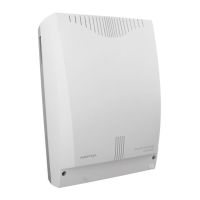Ascotel IntelliGate 2025/2045/2065
Part 2 Routing elements 217
4.1.4 Other Trunk Group Functions and Settings
Name of the trunk group
"Name" is used to assign a name to each trunk group The name's main purpose
is to provide orientation It is displayed on some system terminals whenever an
outgoing connection is set up.
Tip:
It is a good idea to name trunk groups according to the origin of their
lines (e.g. "Public ISDN", "Analogue", "Leased Line Geneva", etc.). This
ensures greater clarity during configuration work.
Generating a Ring-back Tone
The system can use the settings "Outgoing call: Ring-back tone" and "Incoming
call: Ring-back tone" to control within certain limitations the generation of the
ring-back tone on digital trunk connections. These settings do not have to be
altered in normal PBX operation.
• In the case of a stand-alone PBX on the public network the ring-back tone is
supplied by the local exchange and does not have to be generated by the PBX.
• In a PISN with QSIG networking the ring-back tone always has to be generated
in the destination PINX. The setting "Incoming call: Ring-back tone = Gener-
ate" is permanent and cannot be altered.
Here are two applications in which the settings do have to be adapted:
• In a PISN with networking via DSS1 protocol the ring-back tone is normally also
generated in the destination PINX ("Incoming call: Ring-back tone = Gener-
ate"). There are however exceptions (e.g. PBX integrated in CENTREX) where
the ring-back tone does not have to be generated internally. In such cases
select the setting "Incoming call, ring-back tone = Do not generate".
• It is possible that the destination does not generate a ring-back tone. (e.g.
external IP gateways). In such cases it is possible to generate the ring-back tone
locally. To do so, select the setting "Outgoing call, ring-back tone = Generate".
Note:
If several PINXs are cascaded, generate the ring-back tone only once
whenever possible and as close to the called party as possible.

